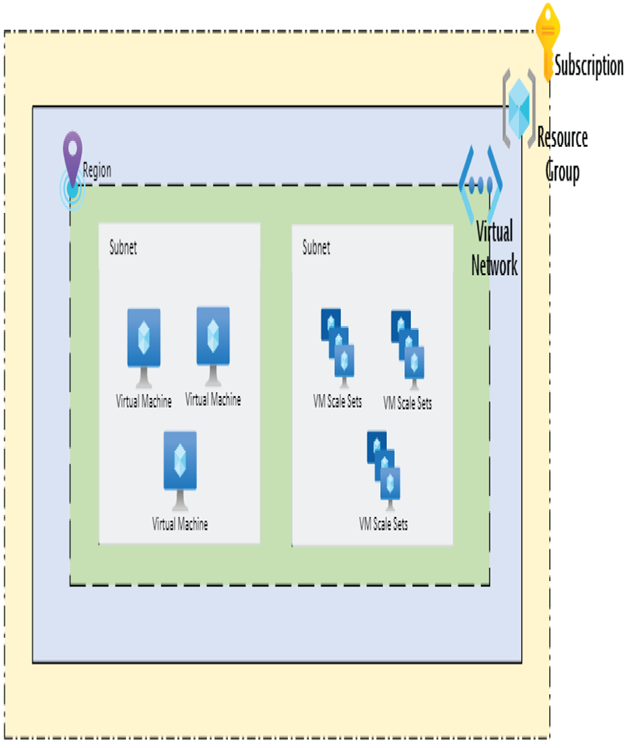Regions – Virtual Networking

In the Chapter 2, “Compliance and Cloud Governance,” you learned what Azure regions are and what role they play in resource deployment and data residency. In the case of virtual networks, they are always scoped to a single region or location. Nevertheless, this doesn’t stop you from connecting with other networks that are in other regions. You could implement solutions such as virtual network peering and VPN gateways to establish connectivity between virtual networks in different regions. In fact, you can establish communication with virtual networks that are part of different subscriptions. We will discuss peering and gateways in Chapter 4, “Intersite Connectivity.”
When you create a virtual network in Azure, you will get an option to choose the region. Depending on the region you choose, the virtual network will be deployed to the respective region, and the virtual machines deployed to the virtual network will also fall under the same region. If you want to move a virtual network deployed in one region to another region, you need to use Azure Resource Mover feature.
Subscription
When we discussed concepts related to Azure Active Directory, you learned that an Azure subscription creates a billing boundary and a resource boundary. In the case of networking, a subscription acts like a home for the network. In a subscription, you can have multiple virtual networks scoped to different regions. This linkage to the subscription helps in billing the organization for different networking-related charges.
For example, if you have a virtual network with the name VNet-1, then the resource ID will be as follows:
/subscriptions/<subscriptionId>/resourcegroups/<resouceGroupName>/ providers/Microsoft.Network/virtualNetworks/VNet-1
Figure 3.1 shows how these concepts are related and how they fit into the bigger picture.

FIGURE 3.1 Understanding virtual networks
Now you will take a look at the IP addressing methods available in Azure.
IP Addressing
When you create a virtual network, an address space is required, and the resources you deploy to the virtual network will obtain the IP address from this address space. Resources will be using this IP address to communicate with the resources within the virtual network and other resources in Azure, on-premises, and the Internet. The communication is accomplished with the help of two types of IP addresses, namely, public IP addresses and private IP addresses. Before you learn about private and public IP addresses, let’s understand the available allocation methods for these IP addresses.